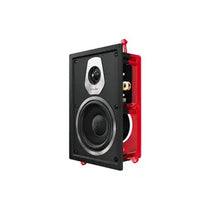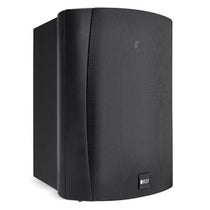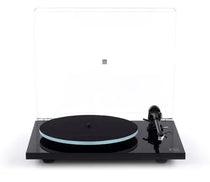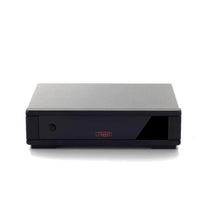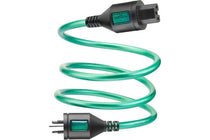So should I save up for the P2 or is the P1 okay?
have been asked this on an almost daily basis since the new Rega Planar 1 and Planar 2 turntables were launched. In this short article I will attempt to cover not just the mechanical differences between them but also have a listen and compare their sound qualities.
At first glance the key specification differences seem fairly obvious, the tonearm and platter.
Further checking and comparing the two indeed indicates that the following parts are indeed identical between the P1 and P2 turntables -
Lid
Sub platter
Belt
Lead out cable
Power supply
Feet
Cartridge/
Plinth
Motor
We should be able to make some interesting comparisons between the only two items that are in fact different (as originally suspected) - the platter and the arm.
Firstly the differences in sound quality between the two as they come out of the box are not insignificant. The P2 offers a considerably more insighful performance with substantially more detail and attack across the board. Grip, drive and extension in the bass area is much improved over the P1. They in fact (considering they are fitted with identical cartridges) offer quite different audio qualities or styles in that the P2 is an exuberant performer, quite lively and dynamic while the P1 definitely sounds more laid back and warm. The question is why
So I popped the glass platter off the P2 onto the P1 and immediately was offered a taughter bass performance with more texture. An enjoyable improvement! I feel as if the output went up a smidge across all of the spectrum though and resolution not just in the bass was improved but in the mid and top as well. Interesting! So Rega's choice of glass does indeed have a sonic signature and for my ears a genuine improvement in performance.
Now the backwards step of placing the P1 platter on the P2. Straight away the bass lost some grip and the whole sound was softened to some degree (warmed up a small notch). Attack and timing went away a bit and for me quite a bit of the magic of the P2 was gone.
So to summarise my listening would suggest that probably 75% of the performance improvement the Rega P2 offers over the P1 comes from the tonearm!!..... Bugger as that arm (RB220) is $500 by itself (yes we can sell you one at The HiFi Shop). The good news though is that the glass platter as fitted to the P2 at the factory can be bought from us also at $140 and is I think a pretty decent upgrade. Combined with a cartridge upgrade such as the Sumiko Oyster the P1 could be substantially improved for not too crazy an amount of dosh.
Nonetheless straight from the box the Rega P1 is such an improvement over a basic plastic turntable from China that maybe that's all you need. If you just buy it and enjoy it, it will last no doubt for 20 years plus just as comes. Jeez the P2 is nice though. So much extra music for $300 more.
To answer the question at the beginning. You need the P2 if you are intending to improve your speakers and amplifier beyond the cheapest thing you could lay your hands on to get started on your record playing adventure. It has the extra performance to really make records sing. If on the other hand you are more of a record collector and just want a proper turntable so your collection is not being worn out by some cheap and nasty record gouger, then maybe the P1 is all you will ever need.
The test rig -
I did my listening tests through the Rega Elix amplifier and a pair of almost run in Spendor D9s. In reality that system combination should never exist as $12,000 speakers connected to either relatively simple and affordable turntable is a smidge out of balance but it did allow me to really hear the differences between them. The other loudspeakers in the picture (Spendor A4) would not shine as stronger spotlight on the differences but nonetheless the P2 represents a bit of a bargain upgrade even in this more balanced system. Particularly when you consider that $300 doesn't even buy you slightly fancy speaker cables for the A4s. BTW the combination sounded very musical (P2, Elix, A4) and not crazy expensive for a system of components all manufactured in the UK.











